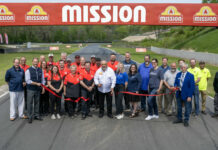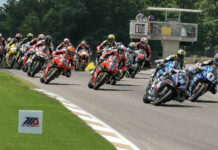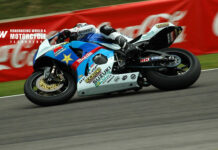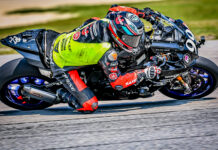What has the transition from 990cc to 800cc been like? “With the advent of the 990cc machines, this was initially greeted with many uncertainties related to the competitiveness of the machines, but soon we saw an escalation of the dizzying performance, which led to a reduction in engine capacity all in the name of safety of the riders, as the power looked as if it was going to be difficult to manage. Since the switch, you watch the stopwatch and now the times are equalling the 990cc machines, but the intervention of important electronics has helped here. Security and safety is a factor to which the team, riders, Dorna and IRTA have given more and more attention.” Engine, tyres and suspension are the three parameters that must be balanced with each other to the needs of the riders. Can you identify a priority among these elements? “Certainly suspension and tyres hold a crucial role and must work in ‘balance’, with each other. And particularly in the light of the benefits that we have with today’s tyres the set up of the bike has to be made very carefully. It is no less important the role of an engine, but with the advent of the four-strokes, the electronic management is the core in order to maximise the performance of the bike tyres and suspension.” We often hear that there is no such thing as the perfect bike, but instead a rider must adapt to the machine to influence the results. “Yes, it’s true, but you can reach a good final compromise. In general we try to develop a balanced motorcycle, whose base is exploitable on all circuits. For sure, it is better to have a bike, which is adaptable, than one, which gives 100% but only under certain conditions. A rider of talent is an element that integrates into this context and he may be able to cover any gaps in the bike and ride around problems.” During practice, in the final twenty minutes riders are battling together and locked in the frenzy of using qualifying tyres. In just one lap the rider must give his maximum. How do you adapt the bike for this and how much comes from the rider himself? “The preparation of the bike does not change too much, as you might think, with regard to the overall geometry of the bike. The suspension is used as it would be for the race, but possibly ‘hardened’ up a little to exploit the qualifying tyre a little more, which is only useable for one lap, sometimes only a lap and a half. Instead, it’s more the rider who tends to change his style of riding to exploit the increased grip, which is often disproportionate to the rubber used in the race. Think about it, if in any corner the rider can make up a tenth of a second on qualifying rubber and the circuit has ten corners, then a perfect lap would mean you’re a whole second faster. The rider who can better exploit this advantage of qualifying tyres takes pole in theory!”
Part Two Of Interview With JiR Team Scot Honda Crew Chief Pietro Caprara
Part Two Of Interview With JiR Team Scot Honda Crew Chief Pietro Caprara
© 2008, Roadracing World Publishing, Inc.






